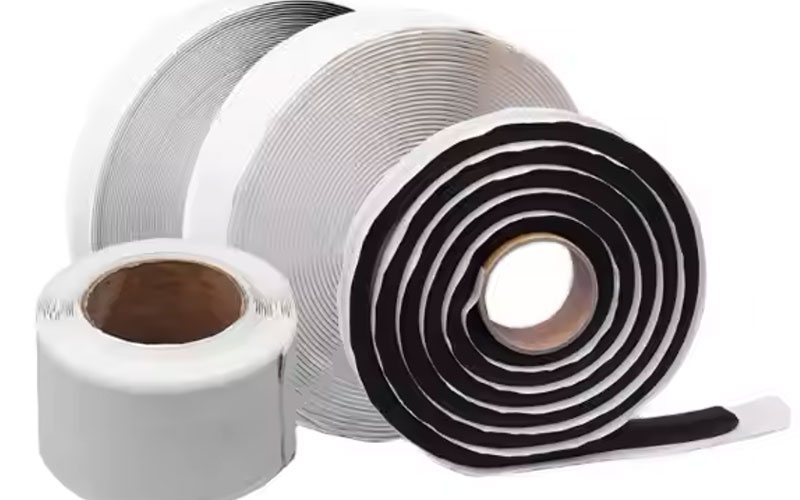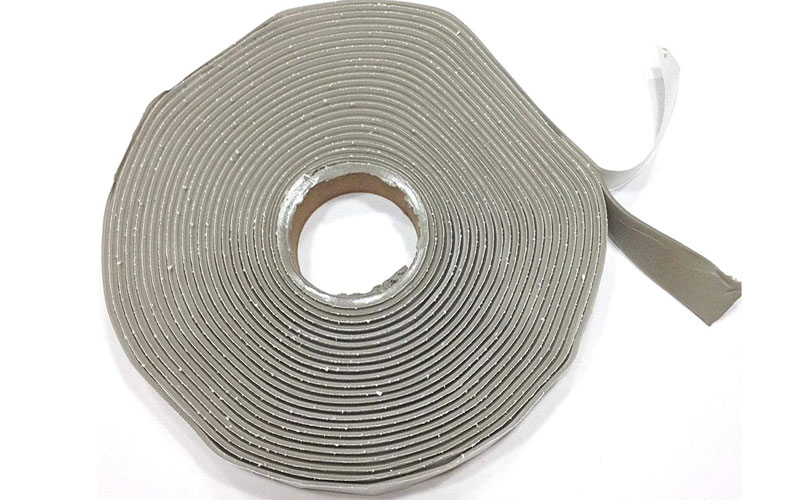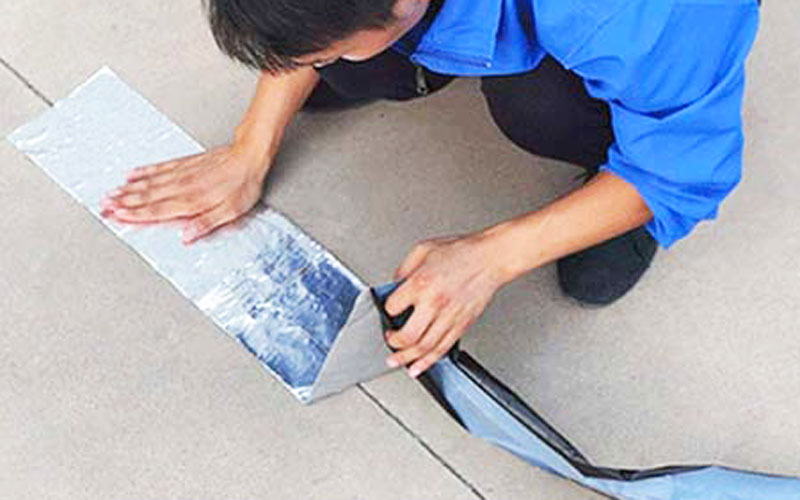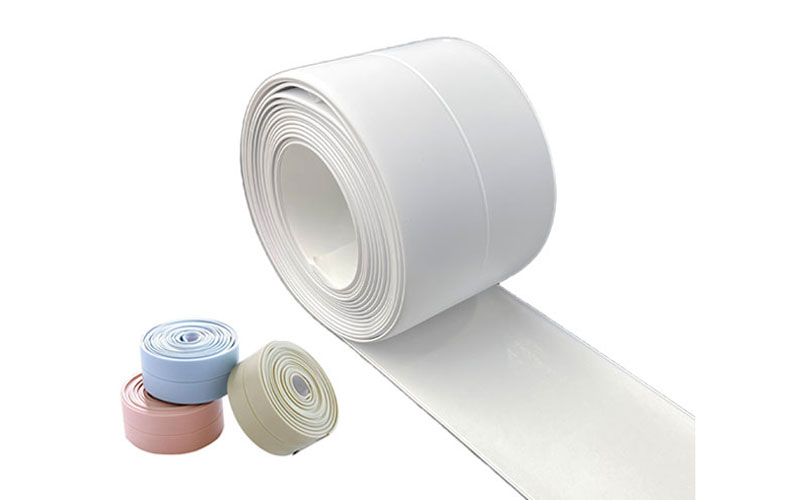In many areas such as home repairs, building construction, and vehicle maintenance, choosing the right adhesives and sealants is a key factor in ensuring a successful and lasting job. Butyl tape vs putty tape are popular for their ease of use and versatility. However, they have significant differences in material composition, performance, application scenarios, etc. This article will deeply explore the characteristics, advantages and disadvantages of these two tapes, and provide a detailed comparative analysis to help you accurately choose the most suitable product based on your specific needs.

1. Butyl tape
(1) Definition of butyl tape
Butyl tape is a self-adhesive tape based on butyl rubber that usually comes with a removable protective film. Its main features are strong initial adhesion and excellent flexibility, which allow it to adhere quickly and firmly to a variety of surfaces, even in humid environments. Butyl tape is widely used in the field of sealing and repair of outdoor facilities such as buildings, automobiles, and ships. It has become a popular choice in the industry because of its excellent weather resistance and waterproof performance.
(2) Characteristics of butyl tape
- Strong initial stickiness: Butyl tape can achieve strong bonding in an instant and has good adaptability to various surfaces such as metal, glass, wood and plastic. This feature makes it ideal for emergency repair scenarios.
- Excellent durability: Butyl tape maintains excellent performance in extreme temperature ranges (from -40°C to 90°C) and varying humidity conditions, combining flexibility and adhesion for long-term use.
- Excellent water and air tightness: This tape can effectively block the penetration of moisture and air. It is effective when used in areas that need to be sealed, such as roofs, pipes, and vehicles, and can effectively prevent leakage problems.
- Low volatility: Compared with other types of tape, butyl tape releases less volatile organic compounds (VOCs) during use and is more environmentally friendly.

(3) Advantages and disadvantages of butyl tape
Advantage
- Strong durability: Butyl tape has a service life of several years, greatly reducing the need for frequent maintenance, and is especially suitable for applications that require high seal durability.
- Widely applicable: It can be used in a variety of building materials and various environmental conditions, especially in scenes with high durability requirements.
- Good antioxidant properties: It is not prone to performance degradation due to oxidation, and can still maintain good sealing effect even in harsh environments such as high temperature or humidity.
Shortcoming
- Sensitive to certain chemicals: Butyl tape may be affected by chemical substances such as turpentine and mineral oil and decompose. Care must be taken to avoid contact with these substances during use.
- Higher cost: Compared to putty tape, butyl tape is relatively expensive and may not be the most ideal choice for projects on a budget.
2. Putty tape
(1) Definition of putty tape
Putty tape is a self-adhesive tape made of rubber-based material that is primarily used to seal pipe joints and temporarily plug leaks. They usually come in roll form with a removable backing that creates a watertight seal around cracks and joints. Because of its flexibility and ease of handling, putty tape performs well in many emergency repair situations.
(2) Characteristics of putty tape
- Easy to apply: Putty tape does not require complicated tools during the construction process and can be used directly after tearing it apart. It is extremely convenient for occasions that require quick repair.
- Moderate initial viscosity: Although the initial tack of putty tape is not as strong as that of butyl tape, it can still achieve good bonding results on most common surfaces.
- Short-term waterproofing effect: Putty tape can quickly fix leaks, but it’s generally not suitable for long-term sealing.

(3) Advantages and disadvantages of putty tape
Advantage
- Affordable: Putty tape is relatively inexpensive and is a viable option for projects with limited budgets, especially in temporary repair scenarios with a high cost performance.
- Easy to operate: Because it is simple to use and requires no special tools, it is very suitable for DIY enthusiasts and non-professionals.
Shortcoming
- Short term effect: Putty tape generally only lasts about a year as a seal, and its performance may degrade significantly over time.
- Leakage problem: In high-temperature environments, putty tape may leach petrochemicals that can cause damage to some surfaces, such as EPDM rubber roofs, so use caution.
3. Comparative analysis of butyl tape and putty tape
The following is a more intuitive table showing the comparison of different properties between butyl tape and putty tape:
| Feature | Butyl Tape | Putty Tape |
|---|---|---|
| Material | Butyl rubber | Rubber-based |
| Initial adhesion | Strong (can bond quickly) | Moderate (medium stickiness) |
| Durability | Long-term (can last for several years) | Short-term (about 1 year) |
| Applicable environment | Extreme temperatures, humid environments, etc. | Normal environments |
| Applicable surfaces | Glass, metal, plastic, wood, etc. | Metal, glass, plastic, wood |
| Waterproof performance | Excellent (strong airtightness and waterproof performance) | General (short-term waterproof effect) |
| Chemical resistance | Weak (easily decomposed when in contact with certain chemicals) | Strong (but may ooze) |
| Price | High (relatively high cost) | Low (economical) |

4. Selection suggestions
(1) Suitable occasions for using butyl tape
- Long term maintenance project: For example, roof waterproofing, vehicle sealing, window installation and other tasks that require stable performance for a long time, butyl tape can ensure an effective sealing effect and ensure long-term use.
- High temperature or humid environment: Under extreme climate conditions such as high temperature and humidity, butyl tape can always maintain good sealing performance due to its excellent adhesion and flexibility, making it an ideal choice in such environments.
- Complex structure seal: When faced with projects that require a durable seal on a variety of surfaces, butyl tape is the solution due to its wide applicability and superior performance.
(2) Suitable occasions for using putty tape
- Emergency repair situation: When emergencies such as water leakage or cracks occur, putty tape can quickly provide a temporary solution, and its convenient use facilitates quick emergency response.
- Economic considerations: For projects with a limited budget, especially where seal durability is not a critical requirement, putty tape is a viable option due to its low price.
- Short-term application scenarios: Suitable for small-scale repair work and temporary sealing tasks, especially in environments that are not easily exposed to chemicals, putty tape can play its advantages.

5. Application case analysis
(1) Practical application cases of butyl tape
In the construction industry, butyl tape is commonly used in roof waterproofing projects. When installing a metal roof, builders often use butyl tape to seal roof vents and joints to ensure there are no leaks during heavy rain or severe weather conditions. In view of the good high-temperature resistance of butyl tape, it is also widely used in sealing repairs of automobiles and ships. It can effectively prevent moisture intrusion and protect the internal structure of vehicles and ships.
(2) Practical application cases of putty tape
Putty tape often plays a role in routine home repairs, such as temporarily blocking leaks in windows or ceilings. When users find a water leakage problem, they can quickly tear off the putty tape and cover the crack to form a temporary waterproof barrier. Although this solution may require multiple repairs in a short period of time, it is still popular among users due to its lower cost and simplicity.

6. Conclusion
Butyl tape and putty tape each have their own unique advantages and disadvantages, and a deep understanding of their performance characteristics and applicable scenarios is crucial to correctly selecting the right product. In projects that require durable, long-term sealing solutions, butyl tape is undoubtedly the first choice; in emergency situations, putty tape performs well due to its affordability and ease of use. I hope this article can provide you with a useful reference for your future repair and maintenance work, helping you to accurately find the most suitable tape product in the fields of home, construction, or vehicle maintenance to ensure smooth progress and good results. For more information about the Butly tape, welcome to contact Toptape.





